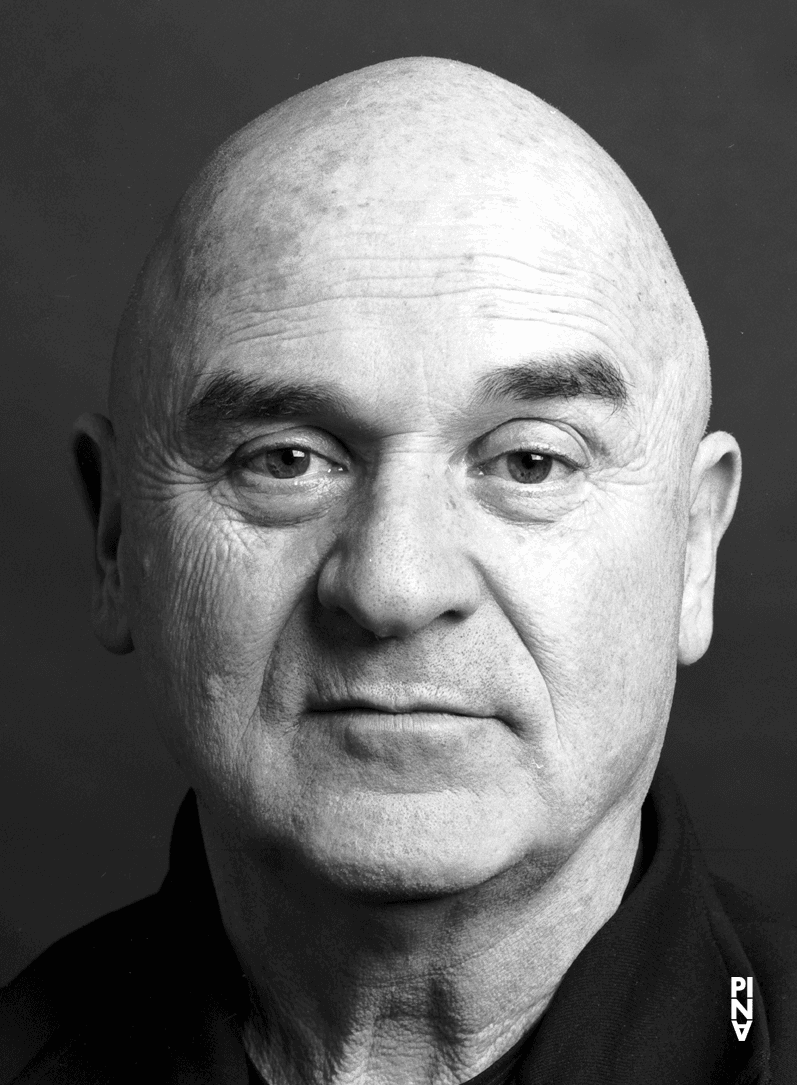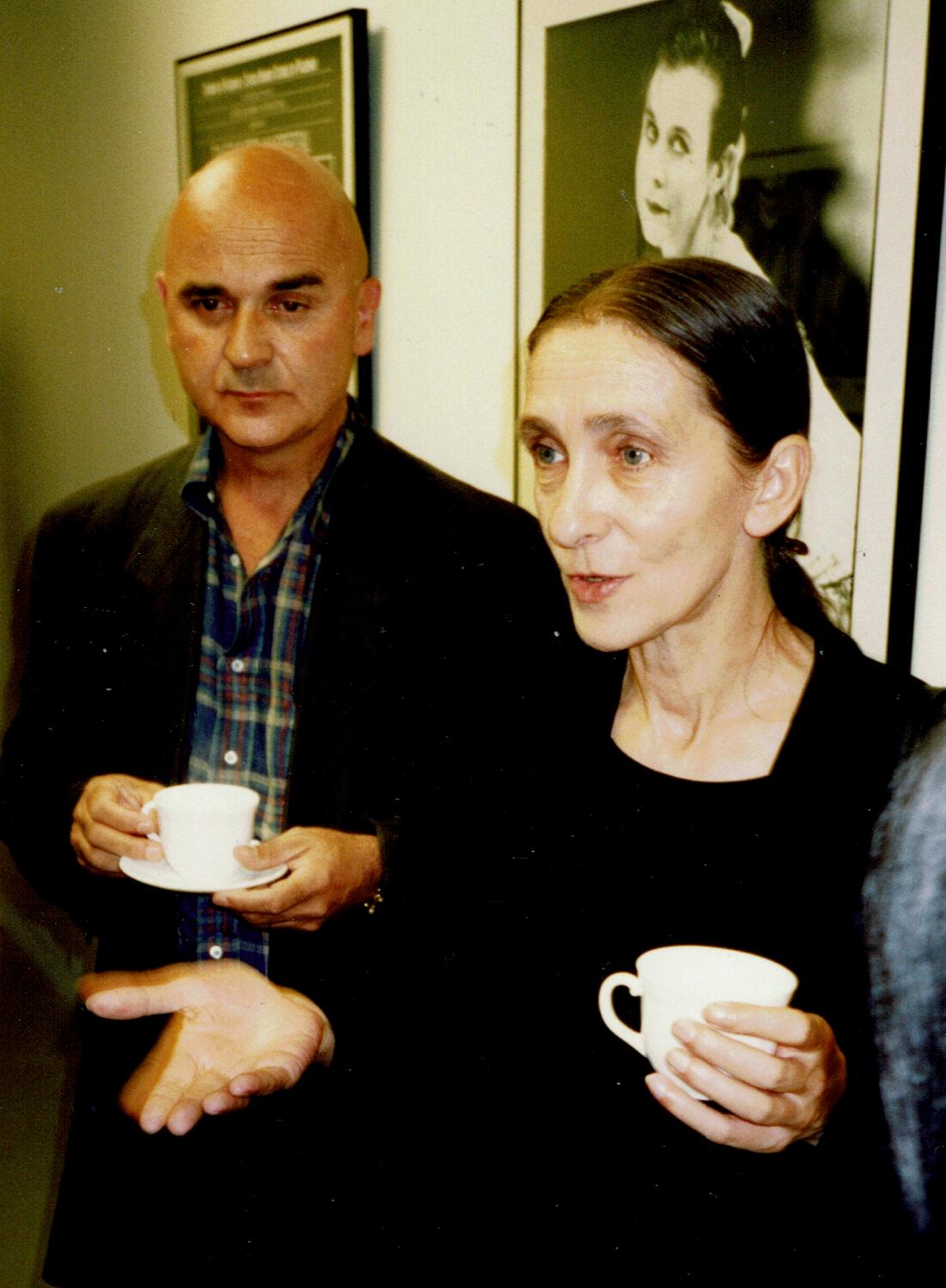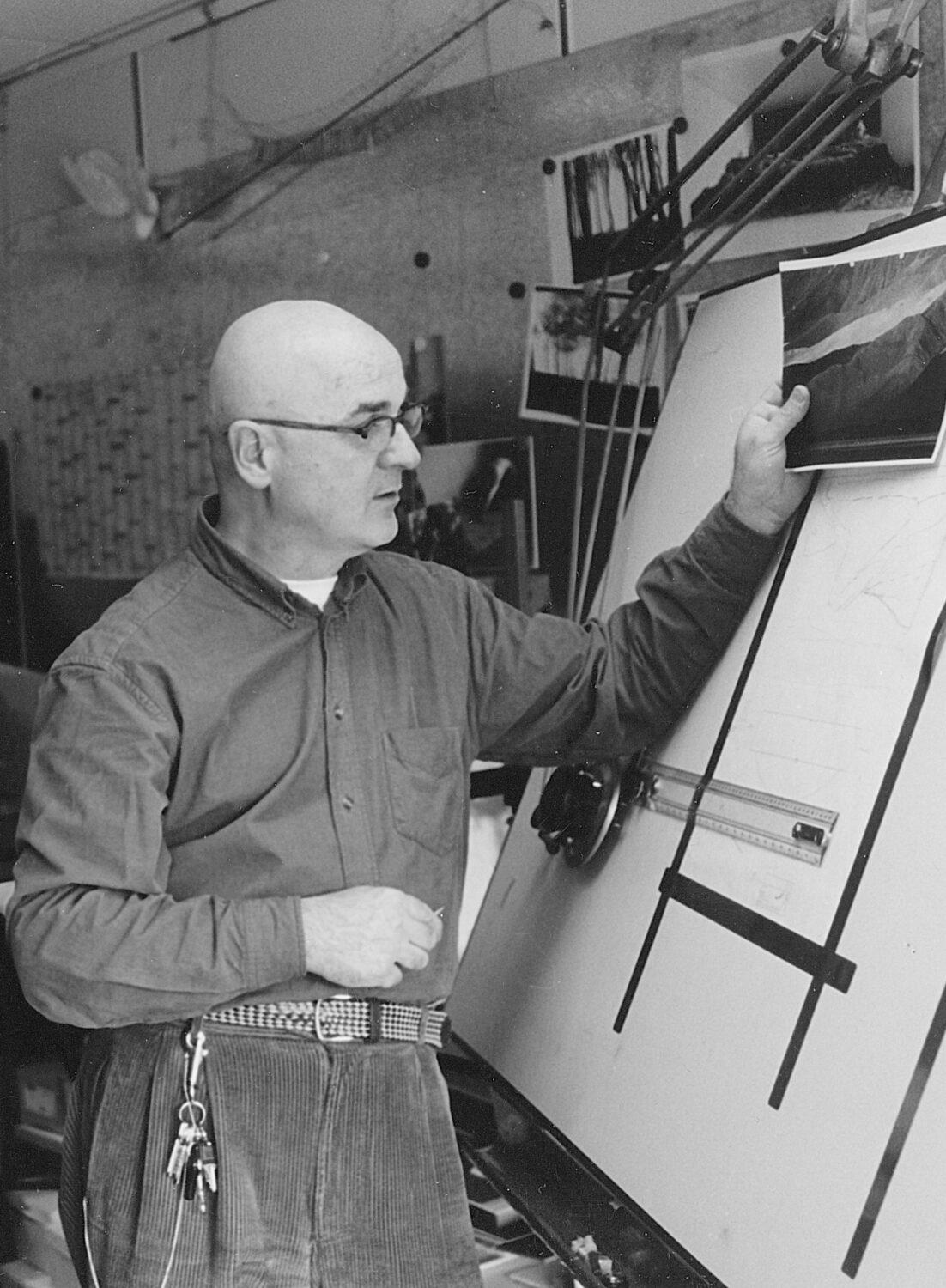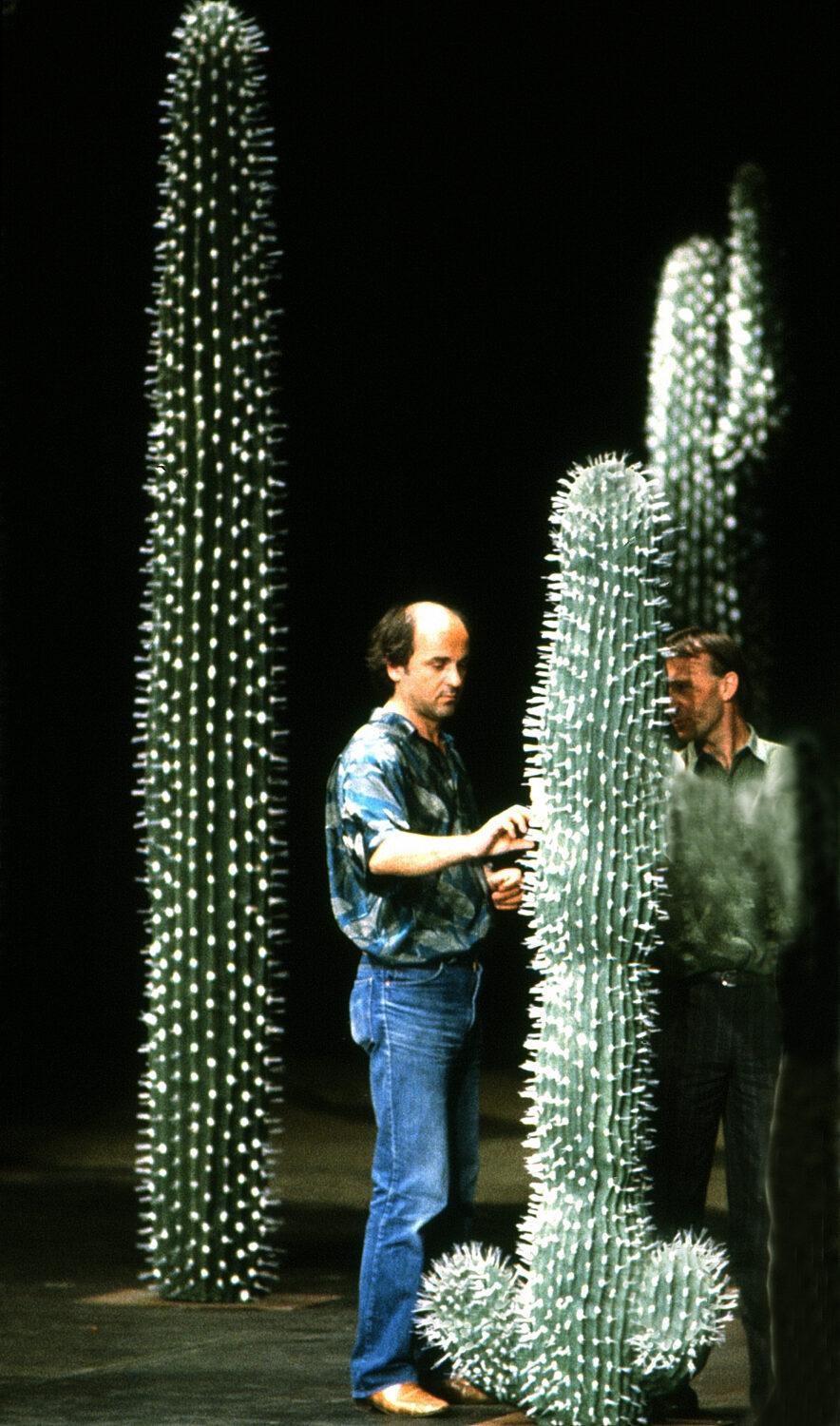The Vitality of the Worlds of Peter Pabst
Leonetta Bentivoglio has written a text for the book Peter for Pina about the stage designs, which Peter Pabst created for the Tanztheater Wuppertal.
Peter Pabst in the set of “O Dido”
Clear, detailed landscapes like frames of film. Dirt, sand, water, clay, fields of carnations. A wall of cement bricks crashes disastrously to earth. Towering over the stage, a mountain of red flowers to dive onto, float upon, and sink into. Cracks open up in the ground, like impending catastrophes, or ones that have already occurred. An enormous ship has run aground on shoals overlooking a beach, presumably after a shipwreck. A moist, bosky womb envelops us like an idyllic countryside, as enchanting as a daydream about a gypsy caravan. A mysterious and melancholy universe is dominated by the huge tail fin of a whale (in the age of fairy-tales?). In a white, wintry cosmos, snowflakes drift down onto the scene, imparting a stealthy lightness to the dancers’ steps. Anxious humanity mills about the mouth of a volcano.
The intensity of the dialogue with space. Anticipation, danger, suspension, bodies romping at abysses. There are always truths and provocations in the environments that Peter Pabst created, over many years, for the works of Pina Bausch.
The setting is alive, dynamic and mutable, capable of determining encounters between spaces, objects and the perceptions of the Tanztheater Wuppertal dancers. Given the possibility of its evolving and transforming, it is a world that offers dancers a series of new experiences. Every time, fragments of the reality that normally surrounds us outside the theater inundate the scene, making us fantasize.
They occupy and delimit the area of theatrical action, including obstacles, concrete objects and natural elements that demand the physical and sensorial engagement of the dancers.
Water distends the costumes, weighing down the movements of the dancing; earth can render a path arduous; clay sticks to sweating bodies; the dancers’ steps sink into sand; a stage full of crumbling cinder blocks can trip them up. Moreover, everything can change – the mountains of dirt disintegrate, the wall tumbles down and fills the stage with broken bricks, the carnations get crushed underfoot and their stems broken.
In sets by Peter Pabst, just as in the theater of Pina Bausch, there is the breath of life, its heartbeat, its pulse. Every single component stimulates questions, solicits images, evokes associations. It is not by chance that Pabst gets ideas and points of departure from the “ongoing” construction of every piece by Pina Bausch, watching rehearsals of the Tanztheater Wuppertal dancers, following the development of the work and going to the different places in the world that from time to time host the working process. There is an environmental universe that is born of the piece and matures alongside it, bringing together various tendencies and transformations from it, and acquiring its own physiognomy based on the profound relationship established with the piece.
In that sense, each piece by Pina Bausch has a character that is directly and completely connected to its own stage set, in a sort of fusion. This is the reason why audiences call Palermo Palermo the ‘wall piece’, or Ahnen the ‘cactus piece’, and so on. The scenic milieu, and the ambiance that it determines, are precise indicators of the identity of the piece, not “simply” its frame. There is never anything exterior, imposed, sketched or purely ornamental in settings by Pabst. They always have a dynamism and vitality that integrate fully with the piece, for which they shape indispensable structures and spaces.
The set for Auf dem Gebirge hat man ein Geschrei gehört (On the Mountain a Cry Was Heard) is a soft, thick blanket of dirt, like a freshly ploughed field. Pabst does not limit himself to reproducing a world; rather, he creates one. Two cigarettes in the dark is a gigantic white box mounted onstage. Its dazzling whiteness tends to level off lines of perspective and cancel angles and depth to our view. Three large rectangular windows score the walls: there is an aquarium with real fish embedded in the left-hand wall, a greenhouse full of succulent plants in the right-hand wall; and a luxuriant, bright green jungle dominates the upstage wall. The show multiplies its visual and narrative planes, leading us to spy on it, as if from somewhere beyond the windows offered by the set – living, pulsating, and utterly concrete panoramas.
The set for Palermo Palermo is an expanse of grey cement bricks that carpet the ground after the terrifying crash of the wall sealing off the proscenium at the very beginning of the performance, just after the curtain opens. The bricks remain there, chaotically strewn, for the entire duration of the piece: memories or projections of the unfinished buildings or skeletons of homes that rise, like excrescences of a disease, on the strip of land joining Palermo to Bagheria.
Peter Pabst’s extraordinary sets are an invitation to look beyond appearances. They are unique places – completely original, mythical yet very real – places that blend fantasy and reality to truly question our senses and emotions.
Leonetta Bentivoglio was head of the dance department at " La Repubblica". English translation by Lynn Swanson.



